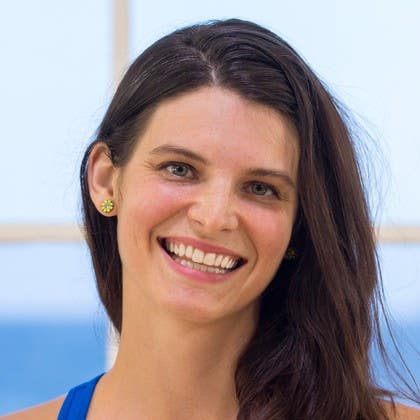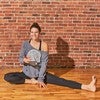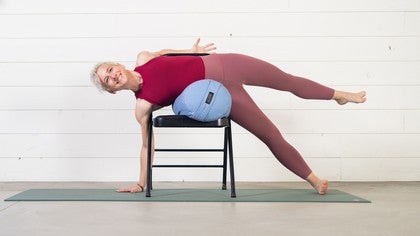
The Vinyasa of Community: Virtual Togetherness in Yoga
It’s the in-between moments before and after a class I can’t stop thinking about.
As a student, it was leaving work a little early to walk downtown New York City, letting the day rinse off with each city block, carving out that extra time to lie on my mat and be alone in a room full of people. As a teacher, it was making that space for others, greeting people, being a part of how they begin or end their day, and learning about their lives through the unique intimacy of their habits and practices.
For years, my mornings and evenings were daily measured by the thrum of students rushing into the studio, arranging props, whispering hellos, and by post-savasana conversations, slower, longer, often carried over to a coffee nearby.
The yoga studio: a place for connection
Studios are social hubs, particularly in the West. They are community centers and fitness zones. They are both intimate and open, places of intense togetherness and deep solitude. Throughout my decades-long yoga practice, studios have been spaces where I’ve found growth, pain, comfort, and deep connection. I often joke that I started teaching yoga to make friends, and in a way it’s true: some of my best friends I met at yoga.
Much of my social life has revolved around yoga. I’ve been teaching since 2008 and one of the things I love best is meeting people. I love knowing who to expect at each class as well as the drop-in surprises, chatting about all the little and big things that make up a day, until the moment when the chat falls away, when the group drops in, collectively, to our shared bond and purpose: making shapes in unison, breathing deeply, breathing together.
And now, all of that is gone. Yoga studios in New York City were closed in mid-March, and have yet to reopen. My classes and routines abruptly ended. Most classes were forced online, studios shuttered indefinitely, and many, sadly, permanently. Suddenly, we were all at home, with nothing but time and our WiFI connections.
Opportunity, change, discomfort
Online yoga isn’t new. On-demand studios, like this one, have been around for awhile, and serve a strong, vibrant global community. Online yoga opens up possibilities, it democratizes practices previously held back by location, ability, finance, or dogma.
The need for community isn’t new, either. I remember something a teacher said in a class I took years ago, something to the effect of, "You’re here for a reason. You could be anywhere, but you came here". We come to a practice like yoga because we are searching for something. Virtual platforms meet the seeker where they are, literally.
So when, in late March, my Instagram feed started blowing up with live classes, tutorials, and links to join classes, it was exciting. People from far flung places messaged me about class times, old friends popped up to join, I found teachers I hadn’t practiced with in decades offering virtual classes. I took Vinyasa from Bene in Italy, Pilates with Zoe in Vermont, Ashtanga with Alex in NYC. I began my own classes, organizing a 7am Vinyasa class and FaceTime privates with friends on the West Coast. It was thrilling to see old faces, to feel connected, to be able to maintain a practice over this tiny screen. This is so cool!, I thought, I could do this forever!
Spoiler: I couldn’t.
Cueing into the void
Without the expectation and purpose that comes with place, teaching in my cramped Brooklyn apartment began to feel claustrophobic and wrong. Questions blinked like neon signs. I had prided myself on being a teacher that taught to the people in the room, teaching unrehearsed being one of my calling cards.
But finding spontaneity over Zoom felt difficult, clunky. At the end of classes I felt lonely, and embarrassed at my loneliness. And small-talk was a non-starter; “You’re on mute” became just as much of a cue as “Engage your glutes”. Some people preferred to turn their camera off; as a student, I did too, but as a teacher it was disorienting.
As more studios went online, pricing packages evolved to accommodate more and more donation based classes. The calls to "support your community" became stronger. For every studio that closed, it seemed another advertised COVID-safe in-person events. What had been exciting now seemed strange.
I tried to hold space for practice, this new way forward like a muscle that needed strengthening. But by the end of spring the rose was off the Zoom. I felt exhausted after a 45-minute class. My body ached in ways I didn’t recognize, loneliness bloomed in my chest each time I opened my computer to teach. My cues felt like a lie. I missed everyone, everything. Sitting is hard on your body; so is dread. I had no solution, no stretch that could make room enough for the grief and anger of the last few months. I didn’t know how to show up for myself and I certainly didn’t know how to show up for a handful of loyal students, peering at me through the screen.
A new kind of studio, a new kind of practice
I’m in a group chat with four other yoga teachers. We all used to teach at the same Brooklyn studio; it was a small, tight-knit community with classes of no more than 12 or so people on average - by New York City standards, small. When the pandemic hit, one of the others in the group sent a Zoom link. What began as a one-time conversation quickly became a weekly ritual.
We never did any yoga. Sometimes we barely talked about yoga. At some point we talked about a Sutras book club, but it hasn’t happened (yet). We sent links to gig worker unemployment benefit sites, shared our anxieties over money, classes, how awkward it could be teaching over Zoom, what to charge, if we should donate the money. At the time I referred to it as the Club, but now I see it for what it is: a studio — a place to gather, to practice, to process, to be together.
It was that ‘studio’ that I went to when teaching yoga stopped feeling good to me, when I didn’t know if I could keep doing it. It helped to joke in our little group, Exhale and imagine spaciousness across your lower back, try not to sink into the feeling that all is lost. It helped to hear others asking the same questions I was, to know they felt the same way, to know I wasn’t alone.
The pandemic wore on. Through the long hot days of summer, New York City became one big backyard, and every park a meeting place. One, near my home, buzzed on the weekends, with no fewer than four local studios hosting classes. I stopped my own classes, and started taking more.
The weekly chats continued. We celebrated birthdays in a park, spread out on blankets, we complained, joked, processed studio closures, community disruptions, contemplated different ways forward. By the time autumn arrived in the city, I felt less exhausted, each meeting like a gentle nudge between my shoulder blades, slowly and subtly propping me up. When I eventually started teaching again, I felt different. More deliberate, more practiced, more supported.
The Vinyasa of community
Vinyasa comes from the Sanskrit term nyasa, which is translated as “to place”, and the prefix vi, “in a special way”. Think of it as doing something with intention, like noticing your inhale and emphasizing your exhale. Making your morning coffee thoughtfully can be Vinyasa, deliberately noticing the texture of the coffee grounds, carefully measuring the water, the careful pour, addition of cream, honey...Chatturanga, upward facing dog, downward facing dog....
Community, for so long in human history thought of as a thing we are born into, has increasingly become something we choose. We find our people, seek places to be ourselves, to be seen. The fact of the matter is we need one another. As humans we will always carve out spaces of belonging, places of affirmation and togetherness.
Studios were where I formed some of my strongest relationships, but like any microculture, they can also be places with intense cults of personality, toxic dynamics, and cliques. Patterns emerged out of the pandemic, demanding to be seen. On a new platform, some studios quickly collapsed, their communities torn by greed, a lack of intention, long unconfronted sexism and racism. More intentional, resilient communities are being built in their place. It seems to me the changes over the last few months, even my own moments of confrontation, would have happened eventually, pandemic or not. Because whether yoga practice happens alone in an apartment or in a studio full of people, it happens in community.
Just as a pose isn’t about the angle of your arm in a shape, but rather how you feel in relation to the angle of your arm, how your arm connects elegantly and sometimes imperfectly to the rest of your body, community isn’t about where you show up, but how. How we relate - elegantly, imperfectly - to one another. What I learned is that community, even a virtual one, can elevate an experience beyond stretching into something much more sublime. By showing up for the virtual studio over the summer, I learned how to better show up for myself. Performing the Chatturanga doesn’t make the Vinyasa, moving with intention and purpose does.
When I think of yoga it’s people I see. People seeking, practicing, belonging, leaving, seeking again. Doing in a special way. When studios closed, some things were lost. But others were gained. Our virtual togetherness gives us more choice, and demands more intention. More people have found their place, more communities fostered connections, what was found lacking has a path to change. We have found a deeper, stronger standard for community, for holding space.
So yes, I still miss my people. I still miss the chats, the holiday parties, the post class gatherings. I miss how my yoga helps me to be social. I can’t wait for the day when I can walk to class instead of switching tabs. For now, I’m leaning into my community, learning a new Vinyasa.
Comments
You need to be a subscriber to post a comment.
Please Log In or Create an Account to start your free trial.











